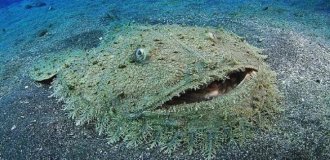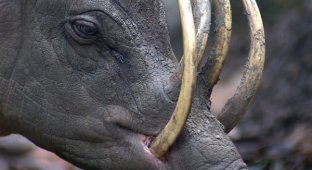Narwhal: why does a whale have a spear on its nose? (11 photos)
The narwhal, or sea unicorn, is a creature no less mythical than an ordinary unicorn. The only difference between them is that narwhals really exist, which cannot be said about horses. But there are plenty of myths and legends about both of them! The tusk alone is worth something - we still don’t know exactly why whales need it! 
The Water Rose Knight has arrived at your command.
Along with killer whales and sperm whales, these animals are extremely extravagant representatives of the order of toothed whales. They are distinguished by their rather modest size: a large adult male grows to only 5.5 meters in length and gains a maximum of 1,600 kilograms. Females are smaller, their weight usually does not exceed 1 ton. 
Jack of Narwhals. What will you hit with?
And our hero would be a clumsy, sausage-shaped inhabitant of the north. But he decided to add another highlight to his image - a huge growth on his face. Because of it, nursery rhymes and stories are told about narwhals, and biologists organize numerous expeditions to study them. But until now, none of the scientists knows 100% why whales need this spear! But we have many plausible and non-contradictory theories at once. But before we voice them, let’s first figure out what kind of growth this is? Horn? Tooth? Part of a skull? 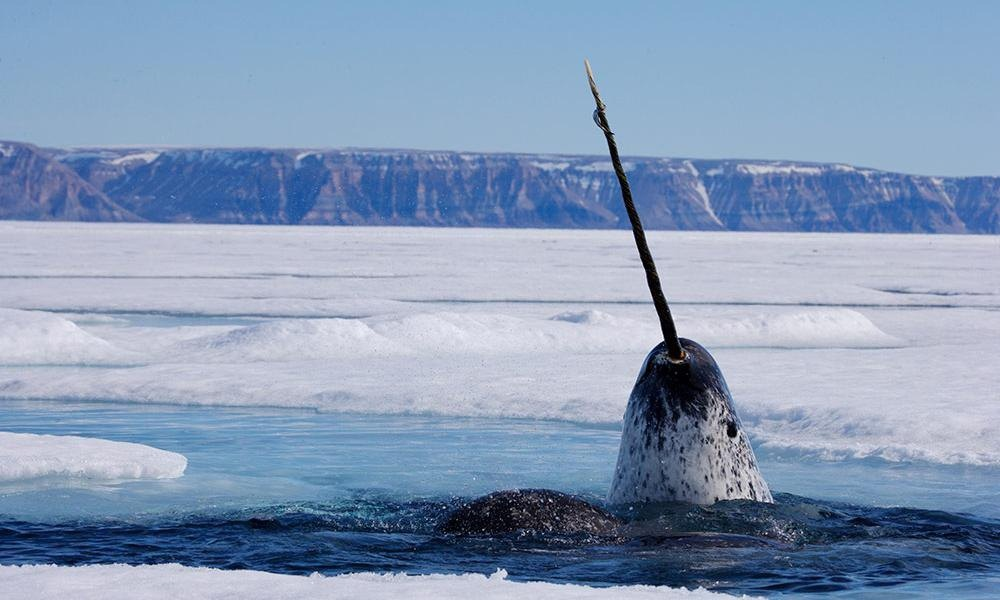
Well, Pinocchio, are you jealous?
Scientists are unanimous on this issue. The pin on a narwhal's face is actually a very long fang that grows straight from the upper jaw. The tooth twists to the left around its axis, like an ice cream from a stall. This tusk grows 3 meters in length and weighs 10 kilograms. It is uncomfortable to wear. You won't be able to pierce anyone through. Conjuring miracles is also unlikely. So why then did evolution reward them with such a miraculous adaptation? 
Sometimes narwhals erupt not one, but two fangs at once. And then you get this slingshot.
The first theory is that narwhals use their tusks to break ice to reach the surface and breathe air. There is logic here. Whales live in the Arctic Ocean and in the northern part of the Atlantic. In the summer they warm their sides near the coasts, but in the winter the whales move further into open waters. In the fall, during migration, there is a high chance of getting caught in an ice trap - when a crust of ice forms faster than the narwhals have time to leave these places. Animals can swim only 1.5 kilometers underwater without access to air. If there is not at least one hole across this distance, alas, the narwhal will simply suffocate and drown. Thus, more than 1000 narwhals were caught in the largest ice trap in Western Greenland in 1915! 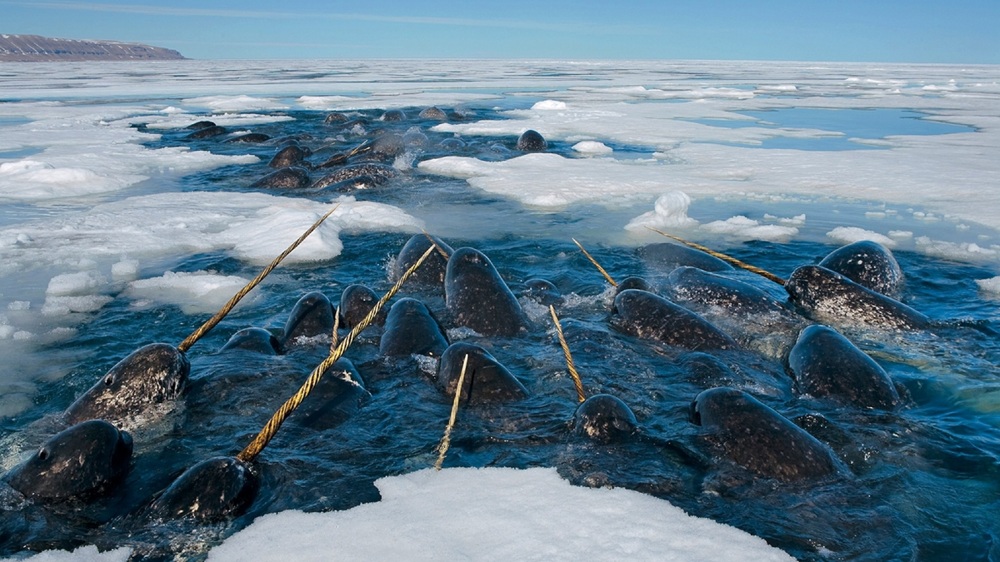
People are trying to get into a crowded minibus in the middle of winter. The wild is cruel.
Of course, the animals are trying with all their might to break the ice. And it seems logical to use a sword on the muzzle for this, but, firstly, a tusk is not suitable for an intensive icebreaker. And secondly, teeth grow better in males. Among females, only 15% can boast of luxurious tusks. What should they do now, die? 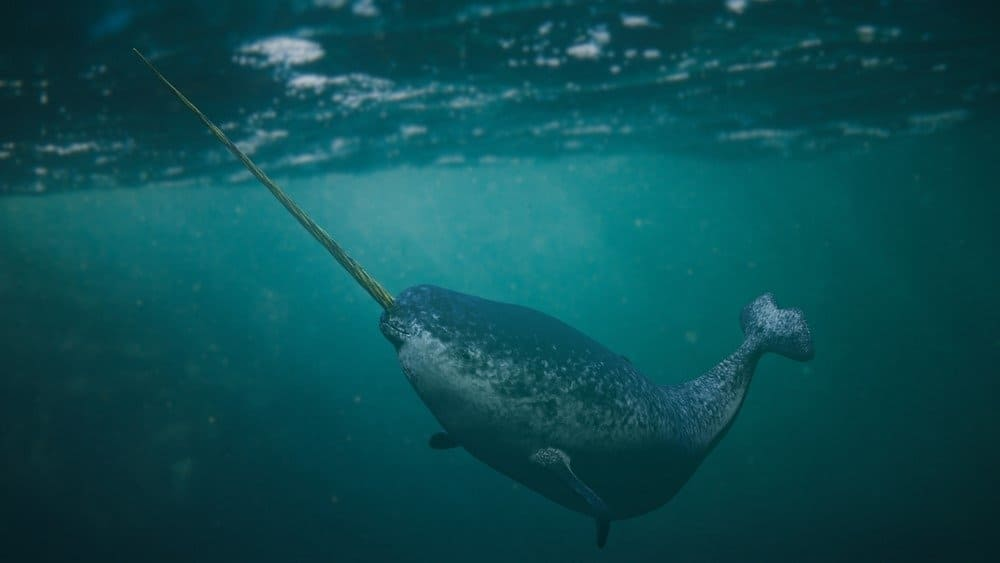
Again the utility workers didn’t remove anything! You'll have to break the ice yourself!
The second theory calls narwhal tusks a way to attract a mate. You can't fight real battles with narwhal halberds - they are too soft for that. But no one forbade the boys to simply measure who had the longest pin? Perhaps the males with the longest horns get the opportunity to mate with all the females in the area - but in reality, no one has thoroughly tested this theory. There is negligible information about the mating rituals of narwhals. We know that animals mate in spring in places where pack ice drifts. Unfortunately, it is quite difficult to track them there. 
Cross your swords, gentlemen!
According to the third theory, narwhals use their tusks to kill prey. Whales feed on bottom fish, squid, shrimp, capelin and some other seafood. For tasty treats, they dive to a depth of 1500 meters and spend about 25 minutes there. But our heroes, apart from one huge fang, have no more teeth, so the whale is not able to bite its prey. So he uses the giant tusk like a cluby. But there are some “buts” here. Scientists have observed this behavior only once. In other cases, the whale simply scares the fish from the bottom. Females also spoil the picture. Most of them are without tusks. And they did not die out of hunger. 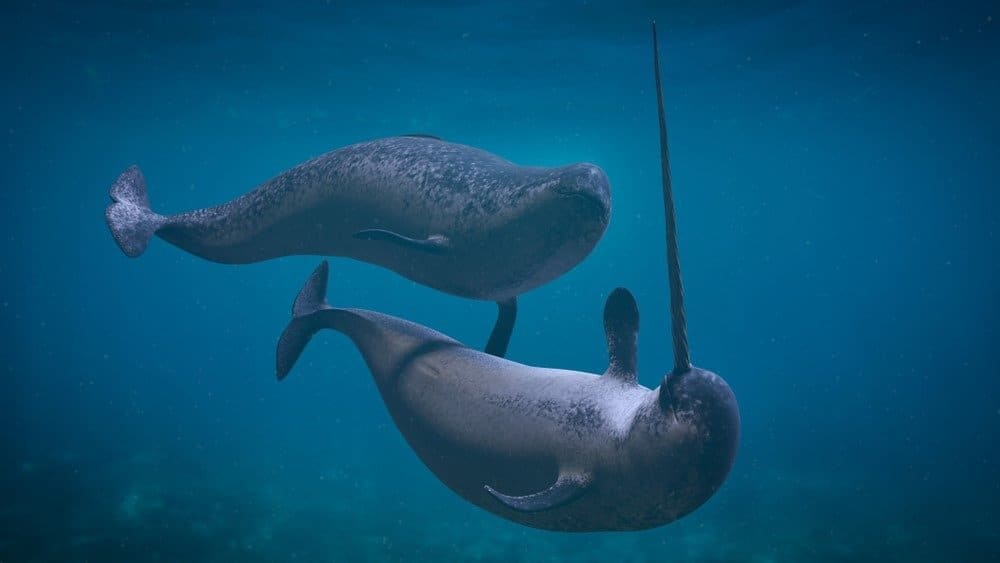
We are used to seeing males with tusks in photos. Now look at the female without them.
The fourth theory is completely new. Here biologists decided to take a closer look at the structure of the tusk. Well, since it is still a tooth, it consists, as a tooth should, of cement, dentin and pulp. When our teeth react to hot or cold, the pulp is to blame. But while humans’ teeth are at least protected by enamel, narwhals have no enamel on their tusks. Can you imagine what life is like for them all the time with an exposed three-meter fang?
Apparently, it’s really nothing. Moreover, this design is specially designed so that whales can react to the slightest changes in the water. There is also common sense here, because fluctuations in salinity may indicate freezing of water and the formation of that same ice trap. But then again, if a tusk serves as such an ideal tool, why don't all females grow one? 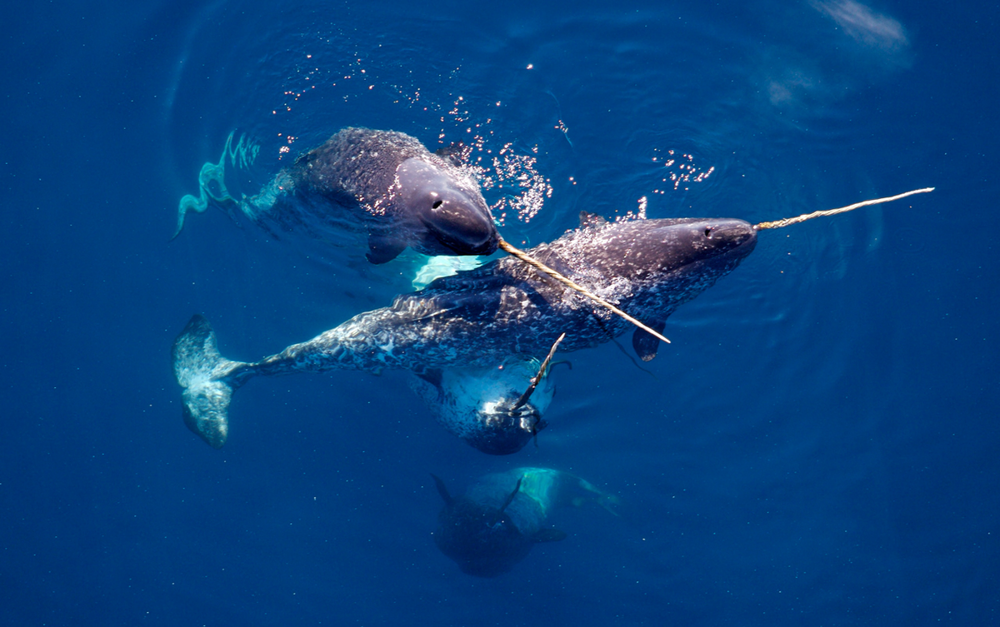
Guys, water is garbage! We measured it!
In addition to the famous tusks, narwhals hide a lot of secrets. For example, interesting social interactions. Not long ago, scientists discovered that females of this species go through menopause. Apart from humans, only a few animal species can boast of this. In theory, whales can live up to 115 years, but their average lifespan is 50-60 years. Females give birth to their first cub at 6-8 years of age, and pregnancy lasts about 14 months. As a result, only one baby is born, and for another two years he will be completely dependent on his mother. If the reproduction rate of narwhals is not very high, why would they refuse to bear children? 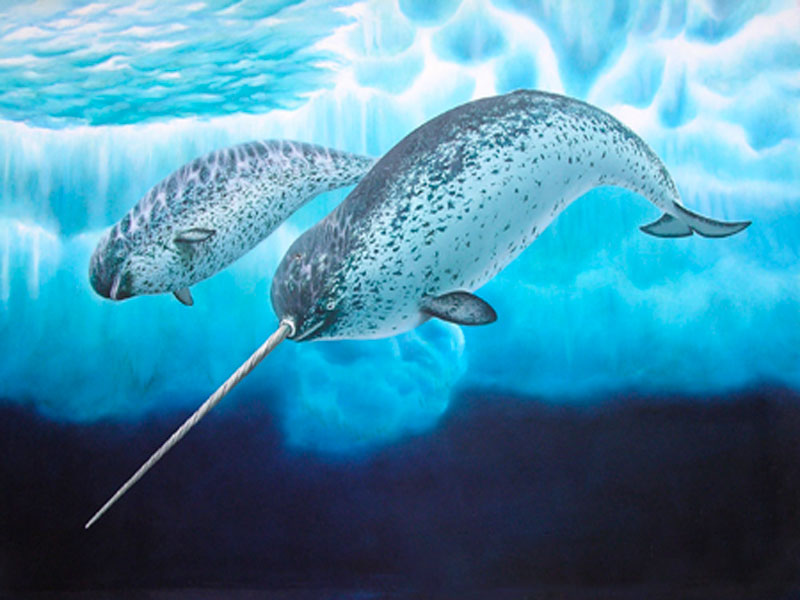
Photos of narwhals and their babies are as difficult to find as finding a real unicorn. So here's a picture for you.
Apparently, grandmothers make a choice in favor of their grandchildren. Old females can teach young animals all the wisdom of life and education, since they themselves have rich experience. For the population, this is much more important than if the grandmothers simply multiplied and did not worry about the growing youth. 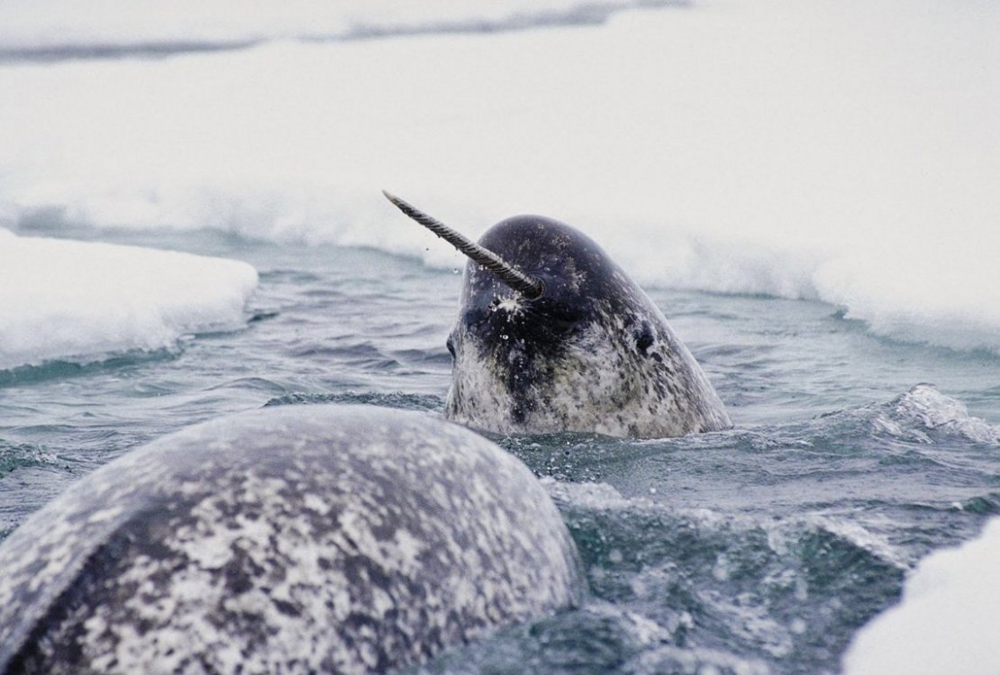
Well, where did you dress him like that? To the beach, perhaps? Well, quickly put a hat on his head and a scarf on his neck!
Today, the narwhal population is practically not in danger. They are not subject to mass industrial hunting. People kill about 1,000 individuals a year; many more die from the teeth of killer whales and polar bears, drown under a continuous crust of ice, suffer from hunger and ocean pollution. Whales are also very sensitive to climate change - scientists can use it to judge how bad things are.
